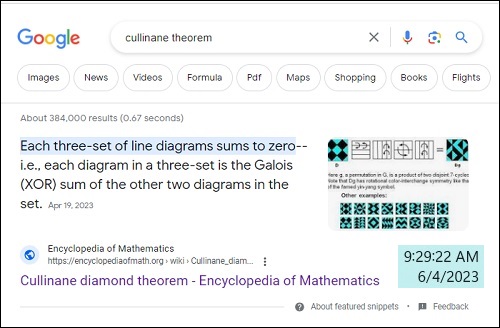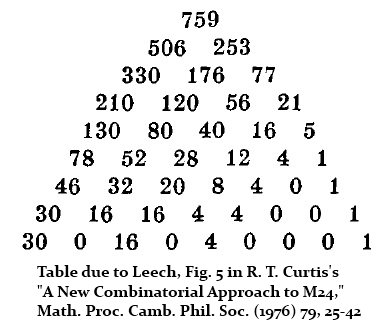“Design is how it works.” — Steven Jobs (See Symmetry and Design.)
“By far the most important structure in design theory is the Steiner system S(5, 8, 24).”
— “Block Designs,” by Andries E. Brouwer

The name Carmichael is not to be found in Booher’s thesis. A book he does cite for the history of S(5,8,24) gives the date of Carmichael’s construction of this design as 1937. It should be dated 1931, as the following quotation shows—
From Log24 on Feb. 20, 2010—
“The linear fractional group modulo 23 of order 24•23•11 is often represented as a doubly transitive group of degree 24 on the symbols ∞, 0, 1, 2,…, 22. This transitive group contains a subgroup of order 8 each element of which transforms into itself the set ∞, 0, 1, 3, 12, 15, 21, 22 of eight elements, while the whole group transforms this set into 3•23•11 sets of eight each. This configuration of octuples has the remarkable property that any given set of five of the 24 symbols occurs in one and just one of these octuples. The largest permutation group Γ on the 24 symbols, each element of which leaves this configuration invariant, is a five-fold transitive group of degree 24 and order 24•23•22•21•20•48. This is the Mathieu group of degree 24.”
– R. D. Carmichael, “Tactical Configurations of Rank Two,” in American Journal of Mathematics, Vol. 53, No. 1 (Jan., 1931), pp. 217-240
Epigraph from Ch. 4 of Design Theory , Vol. I:
“Es is eine alte Geschichte,
doch bleibt sie immer neu ”
—Heine (Lyrisches Intermezzo XXXIX)
See also “Do you like apples?“



























 .
.













